The challenges facing rural America are well-known and exhaustively documented. Chronically shrinking populations beget shrinking tax bases and shriveling public services. Town squares board up. Hospitals close. The most promising youth light out for elsewhere, just as lack of reliable internet now helps to quash most any notion of winning back folks from the city, post-pandemic.
It’s also been noted that many rural communities have fallen victim to a vicious cycle.
“Some communities are dominated by people that really don’t want any change,” says Ron Tillery, executive director of the Phelps County Development Corporation in Phelps County, Nebraska, a top performer in this Site Selection examination of rural economic development.
“Change,” Tillery argues, “is not a choice. And if you want to influence that change to the positive, you’ve got to take concrete steps to make it happen. That’s going to be the difference for those communities that are going to survive and thrive in the future, whether it be 10 years from now or 50 years from now. Communities that can’t embrace that,” Tillery warns, “they’re going to fail. We see examples all around.”
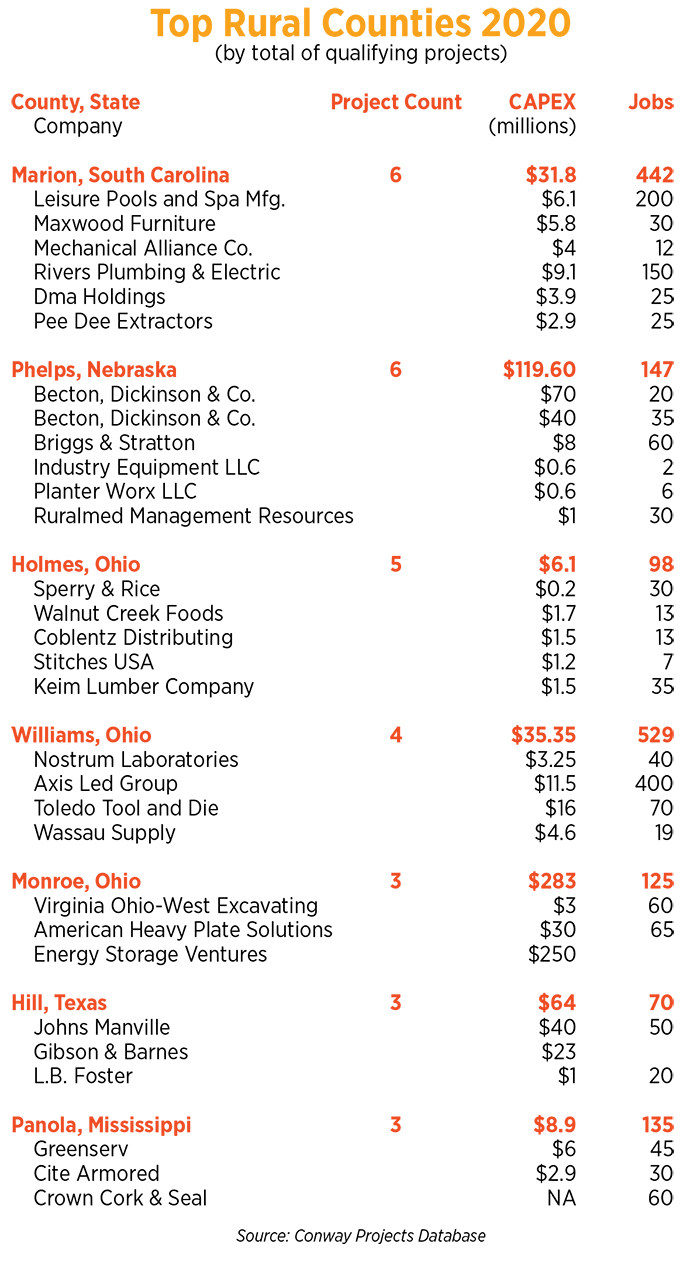
Of the 3,142 counties and county-equivalent units in the United States, 1,287 do not belong to any established Metropolitan Statistical Area (MSA), according to Daniel Boyer, director of programming and analytics for Conway Data, Inc. Those counties can thus be considered “non-metro” or “rural.”
To identify rural counties that found success in economic development in 2020, Conway’s Boyer mined for projects within those counties that merited inclusion in the Conway Projects Database that tracks significant capital investment, job creation or physical buildout by corporate end users. Among the findings:
- A total of 196 rural counties — roughly 15% — registered at least one qualifying investment of $1 million or more, 20 new hires or 20,000 sq. ft. of new buildout.
- The most qualifying projects in a single rural county was six, a distinction shared by Tillery’s Phelps Co. and Marion County, South Carolina.
- Kentucky had 19 rural counties with at least one qualifying investment, the most of any state, followed by Virginia, Texas and Georgia (see map chart).
- Only eight rural counties registered more than two qualifying investments; 19 states had none at all.
- As also tends to be the case with projects in metropolitan counties, states in the Sunbelt and Midwest predominate among leaders for rural investment.
- Nestle Purina PetCare’s $550 million expansion of its pet food manufacturing facility in Hart County, Georgia, was the most lucrative rural project announced in 2020.
Follow-on interviews with officials in the most successful counties of 2020 revealed a striking consensus. Without fail, they stressed the need for increased public and private investment in infrastructure, education, workforce development, water and sewer systems, shovel-ready sites, amenities and housing.
A September 2020 report by the Center for Strategic and International Studies put it this way:
“Rural economies have the potential to create meaningful economic opportunities in the future, yet rural development needs to go beyond the notion of improving agricultural productivity; it must promote agricultural transformation that modernizes and commercializes agriculture, encourage investments in human capital in rural areas, and bolster private enterprise and investment.”
Among rural economic developers contacted for this article, even the most successful resort to phrases such as “stop the bleeding” when they speak to the urgency of their mission, especially as it relates to stanching brain drain. Tillery isn’t alone in suggesting that parts of rural America are staring at some sort of reckoning, one that promised help from Washington cannot stave off.
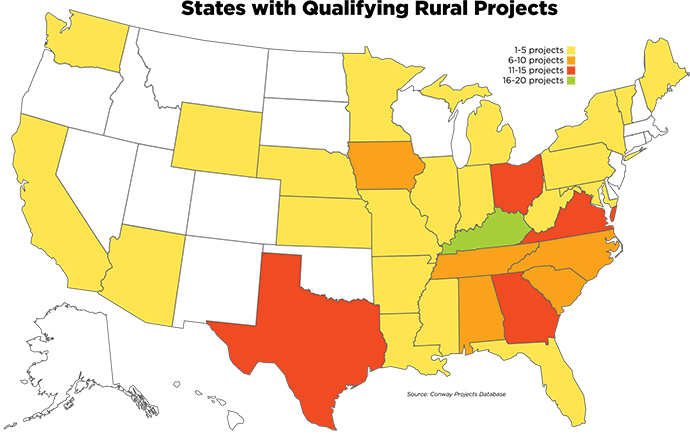
“You have got to have leaders step up,” says Danny Black, president and CEO of SouthernCarolina Alliance, which represents seven contiguous counties in the South Carolina Low Country fanning out north and west from Charleston. Hampton County, one of the Alliance’s seven members, scored one of the biggest rural projects of the year, a $314 million agricultural park on property the Alliance had procured for development.
“Small town leaders are going to have to be able to convince folks that, ‘well, we might have to pay higher taxes to get some of these things done.’ I’ll talk to 50 people in any of these communities today,” Black tells Site Selection, “and all 50 will say the taxes are too high. But we have got to bite the bullet. We have got to invest and grow the population. If you don’t grow, you’ve got to move. That’s what these rural counties are having to do these days.”
Phelps County is Funding Progress
In 2015, 83% of Phelps County voters in Nebraska voted to raise their taxes to promote economic development. The resulting windfall, says Tillery, generates in the neighborhood of $500,000 a year.
“We’ve used that money to acquire industrial property and improve it,” he says from the county seat, Holdrege, located in the south-central portion of the state. “We’ve used that money to fund housing development and also housing renovation. We’ve used it to improve our downtown storefronts in Holdrege and other things to better prepare our community. We think downtowns are important. So, it’s just a very, very important and key economic development tool for us. It gives me the necessary tools I need to help us grow.”
Phelps County is really rural, Lincoln being two hours east on the heavily travelled Interstate 80. The county’s 200,000 cattle far outnumber its 9,100 citizens. Its six qualifying projects represent $119.6 million of capital investment and 147 new jobs.
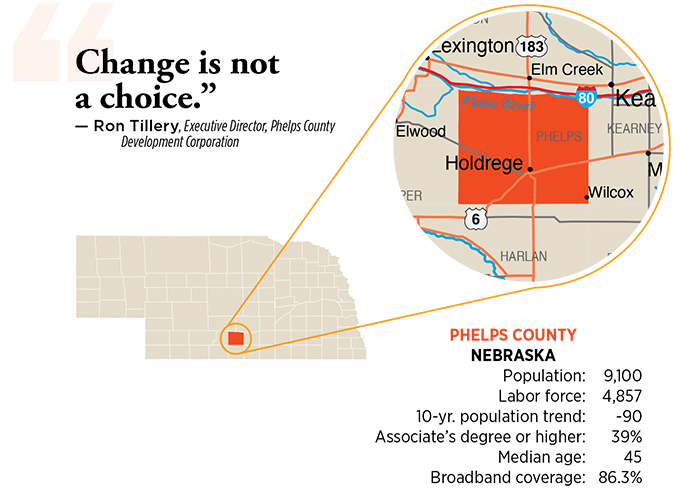
“We are an agricultural production community,” explains Tillery. “But if you look closer, many Nebraska communities have much more complexity to their economic makeup than just that single stereotypical image. There are other economic threads running through the community to bind everything together, and it’s important for us to be able to recognize what our strengths and weaknesses are, play to those strengths, and then try to try to build on the momentum that we’ve built.”
Indeed, the Holdrege manufacturing plant of Becton Dickinson, the New Jersey-based medical equipment manufacturer, is one of the world’s largest producers of insulin syringes. Boosted in part by a government contract to make syringes for COVID-19 vaccinations, Becton Dickinson announced separate investments totaling $110 million in 2020. A serial investor in Holdrege of more than $200 million over the past five years, Becton Dickinson arrived in 1966 and now is the county’s biggest employer.
Likewise, Allmand Bros., a home-grown subsidiary of Briggs & Stratton, is nearing 85 years at the Holdrege manufacturing plant where it makes job-site equipment. Last year, the company announced yet another in a series of expansions that will create 60 jobs. (Briggs & Stratton filed for bankruptcy protection in August.)
Two indicators, in particular, speak to Phelps County’s strengths. In an era when many rural communities are losing doctors, Phelps Memorial Health Center is a shining star, having completed a $25 million expansion in August. The new 42,000-sq.-ft. (3,900-sq.-m) space includes a rural health clinic, plus cardiac, pulmonary and oncology services, with room to further expand.
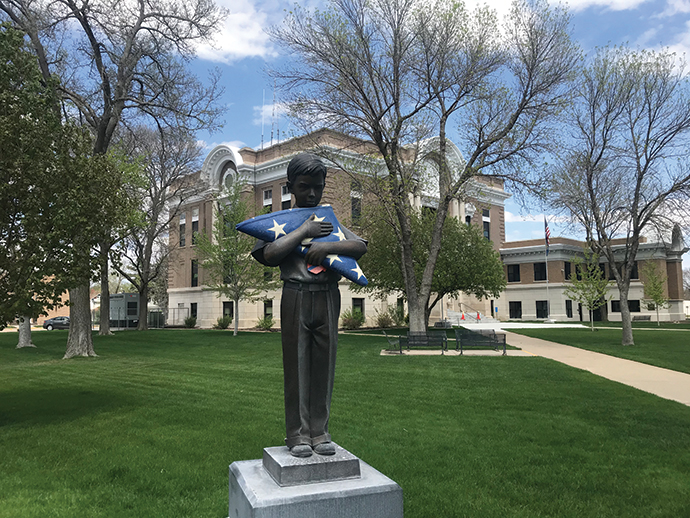
Of paramount importance, people are not fleeing Phelps. From 2010 to 2020, the county lost less than 1% of its population, making it a standout even among other high-performing counties. (Hill County, Texas, with a 10-year population gain of about 600, is the only rural county with three or more qualifying projects to register a net increase).
Tillery says that over the past four years, 350 former commuters to Phelps County have become permanent residents through a program by which the county matches an employer’s contribution, up to $5,000, toward a down payment on the inbound employee’s new home. The county also has funded new rental units targeted toward teachers.
“You’ve got to be able to focus on a lot of different things at the same time,” says Tillery, “not just the traditional economic development things like taking care of your existing business base and recruiting new businesses. As just one example, we can’t attract employees, which we desperately need, without housing for them. So, we have to work on all these fronts. It’s kind of like the old Russian plate spinner. One plate starts to wobble and you got to run back and get it spinning again.”
Inland Port Fuels Growth in Marion County
Julie Norman, the retiring executive director of economic development for Marion County, South Carolina, is even more expansive when it comes to the task of bringing renewed life to rural areas.
“You have to take a holistic approach,” says the energetic economic developer. “You have to deal with schools and hospitals and community development things and amenities and hotels, rooftop bars, in addition to all the traditional economic development activities. Our five-year plan includes all of those things with very specific tactics on how we’re going to create this, because communities chase businesses, but businesses chase people. I’ve got to make sure I have people. And no people are coming to rural South Carolina if you don’t have the amenities. I’ve been pushing for a couple of years now how to incentivize people to move here, not just companies.”
Wedged between the Myrtle Beach and Florence metros, Marion County has a modest population just north of 31,000. Its six qualifying projects of 2020 accounted for $31.8 million in capital investment and 442 new jobs.
In addition to sharing top billing among Site Selection’s rural leaders, Marion ranked fourth for major projects statewide, among counties both metro and rural, according to the South Carolina Department of Commerce. That put it ahead of numerous larger counties, including Anderson, outside Greenville, whose population is six times greater.
Among Marion’s most impressive wins of 2020, Tennessee-based Leisure Pools announced plans in September to invest $6.1 million in a new facility that’s to create 200 jobs. Leisure Pools purchased a Beneteau boat facility that closed last summer after 33 years in business.
“The state of South Carolina and Marion County economic development teams have been incredible to work with putting together a program welcoming our company to Marion and to help create jobs,” said Leisure Pools CEO and co-founder David Pain.
Norman says Marion County, with its agriculture-based economy, has seen a recent uptick in manufacturing and distribution operations. For that, she assigns hefty credit to Inland Port Dillon, opened in neighboring Dillon County by the South Carolina Ports Authority in 2018. The inland port facility provides direct access via CSX to the Port of Charleston, 115 miles (185 km.) to the south. It generates an estimated $7.1 billion regional impact.
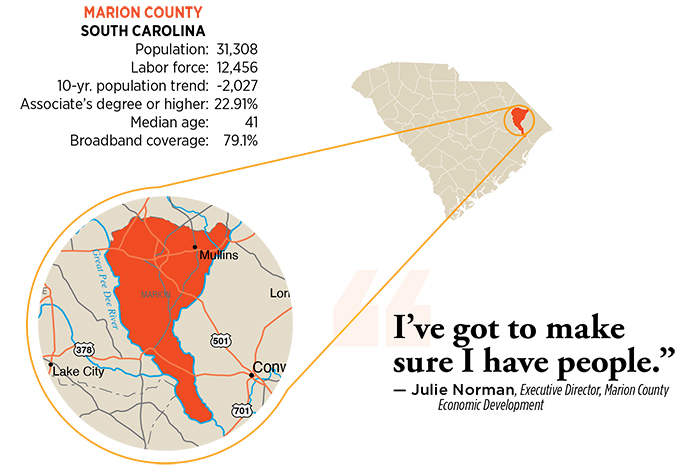
“You can get an acre of land here for somewhere between cheap and free, no more than $5,000, compared to a quarter-million dollars in Charleston,” says Norman. “That means you can be right here in Marion County and get all the benefits of being at the Port of Charleston for a fraction of the cost. Port Dillon,” she says, “is our greatest asset by far.”
The port helped to enable 2020 expansions in Marion County by auto parts distributor Dma Holdings ($3.5 million/25 jobs) and Maxwood Furniture ($5.8 million/30 jobs.) Maxwood arrived in the county in 2019 with a new distribution center.
“The larger warehouse,” said Maxwood President Stephen Jensen, “will enable us to expand our operations and develop our distribution even further, particularly in the e-commerce fulfillment sector.”
With an eye toward leveraging Port Dillon, a regional alliance of Marion, Dillon and Marlboro counties is planning a new industrial park on 2,600 Marion County acres (1,050 hectares) connected to the port by rail. The county currently has 12 industrial sites, three of which are certified though South Carolina’s Palmetto Sites program, and Norman says encouragement of further speculative development is an on-going priority.
“It’s one thing to have Port Dillon right in our backyard,” she says. “It’s another thing to actually use that port as an asset.”
Hampton County’s Very Big Deal
Strategic thinking similar to that helped South Carolina’s Hampton County, about an hour west of Charleston, to land the $314 million Agricultural Technology Campus (ATC), announced in September. The 1,000-acre (405-hectare), intensive indoor agribusiness project, named a Top Deal of 2020 by Site Selection earlier this year, is to create more than 1,500 jobs over the next five years within the perennially underserved community.
“Manufacturing has not necessarily migrated to this area as it has to other parts of South Carolina,” says Black of the SouthernCarolina Alliance. “This opens new kinds of opportunities for us. It’s the wave of the future, where every segment of the country will have a dedicated agricultural base. So, when a pandemic hits again or some other natural disaster, you don’t have to wait for your produce to come from Mexico or California. This is where we’re going.”
Hampton County, says Black, bested competition for the project from sites in Texas and Arizona, as plans for the campus ballooned to include investments by Canada’s Mastronardi Produce, LiDestri Food and Drink, Clear Water Farms and GEM Opportunity Zone Fund, driven by Aiken County investor Zeb Portanova. Hampton County was ready with a big piece of property, having purchased or optioned more than 1,000 acres (405 hectares) of local timberland from Weyerhaeuser.
“If we hadn’t had control of that large piece of property, we wouldn’t have been able to locate these folks,” Black tells Site Selection.
The campus is expected to be operational in 2022 with full buildout expected by 2025. While Hampton County is rich in agricultural history, the jobs to be created at ATC lean in the direction of agricultural technology — a prospect, says Black, that could challenge the local workforce.
“These are not minimum wage jobs,” he says. “They’re going to require some advanced skills and knowledge of how to operate some very sophisticated equipment.”
To that end, local officials are working with Clemson University to build an on-site training facility, as well as a research center. Parallel to that effort, ATC is seeking partnerships related to seed technology, robotics, artificial intelligence and blockchain technology. The campus also plans to make available packaging space to local farmers.
“It has been a team effort all around,” says Black. “The community has been supportive of investing money into infrastructure and looking for opportunities such as this, where we’re converting a pine forest into a project of this scope. And it all starts with the vision that we’ve got to be something bigger than we are today.”

